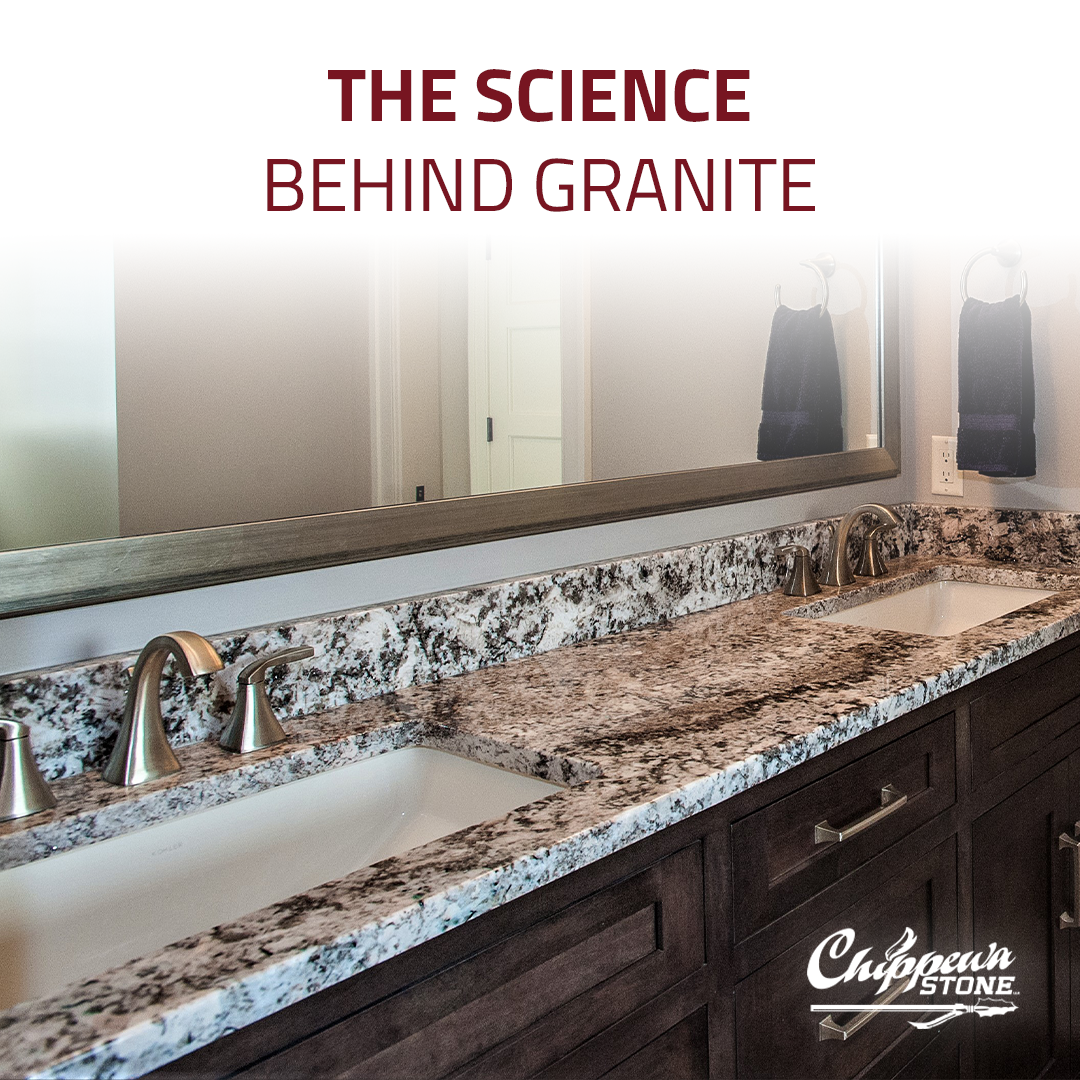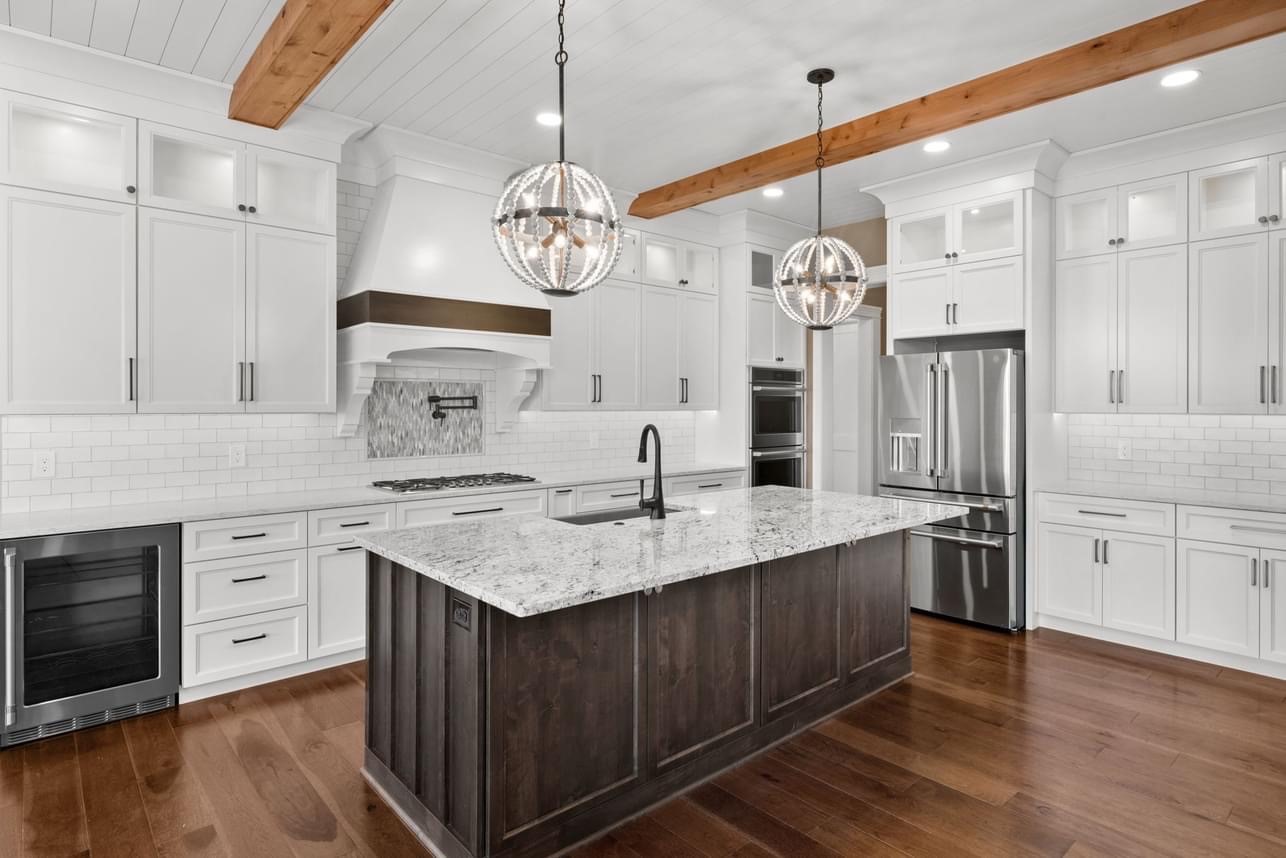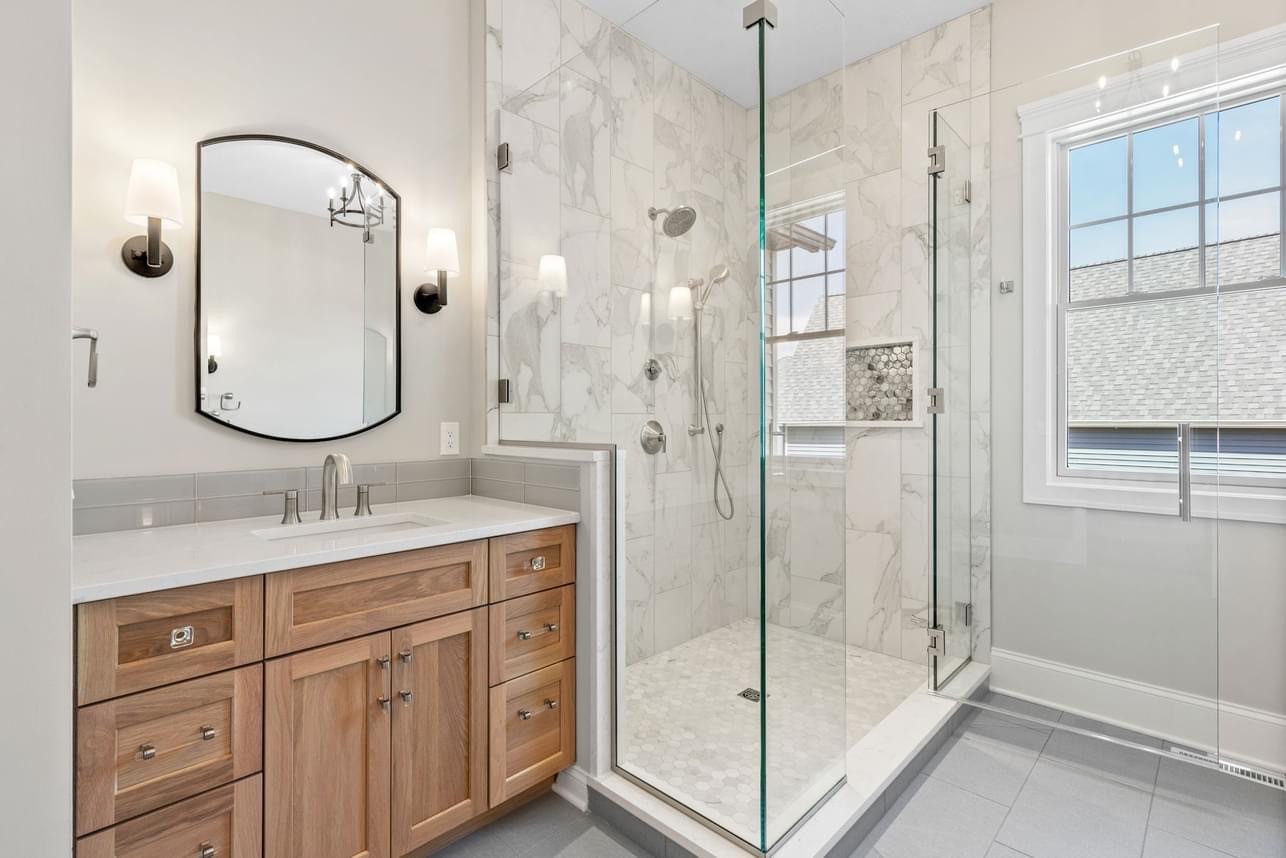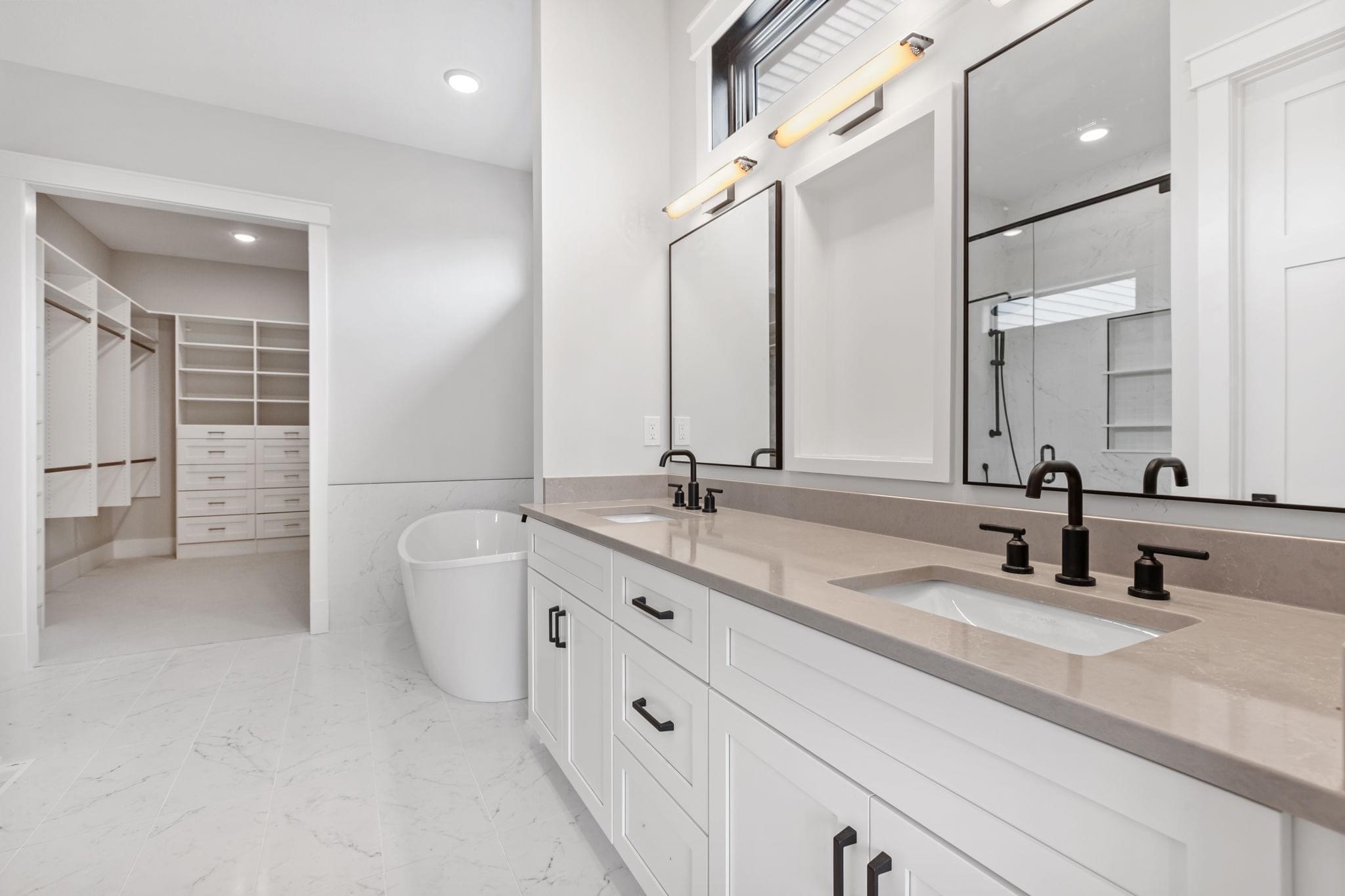Granite is a fascinating natural stone that has been revered for centuries for its beauty, durability, and versatility. Whether used in countertops, flooring, or monuments, granite’s appeal is timeless. But what makes granite so special? We’ll delve into the science behind granite, exploring its formation, properties, and why it remains a top choice for builders and designers. Understanding the geological processes and chemical composition of granite not only enhances our appreciation for this stone but also highlights the remarkable power of nature.
The Formation of Granite: A Geological Journey
- Origin in the Earth’s Crust: Granite is an igneous rock, meaning it forms from the cooling and solidification of molten rock, or magma. This process occurs deep within the Earth’s crust, typically at depths of 15 to 50 kilometers (about 9 to 30 miles). The formation of granite is a slow and gradual process that takes millions of years, allowing for the growth of large, visible mineral crystals.
- Intrusive Rock Formation: Granite is classified as an intrusive igneous rock, which means it forms from magma that cools and solidifies below the Earth’s surface. This is in contrast to extrusive igneous rocks, like basalt, which form from lava that cools on the surface. The slow cooling process of granite allows for the development of its characteristic coarse-grained texture, with interlocking crystals of minerals such as quartz, feldspar, and mica.
- Plate Tectonics and Granite Formation: The formation of granite is closely linked to the movements of the Earth’s tectonic plates. When continental plates collide, they create conditions conducive to granite formation. The intense pressure and heat generated by these collisions cause the melting of pre-existing rocks, leading to the creation of magma. As this magma slowly cools and crystallizes beneath the Earth’s surface, granite is born.
- Types of Granite: Granite is not a single, uniform material but rather comes in various types depending on its mineral composition and the specific geological conditions under which it formed. Some common types of granite include:
- Biotite Granite: Rich in biotite mica, giving it a dark color.
- Muscovite Granite: Contains muscovite mica, which gives it a lighter appearance.
- Alkali Feldspar Granite: Dominated by alkali feldspar minerals, often giving it a pink or red hue.
The Mineral Composition of Granite
- Quartz: Quartz is a significant component of granite, typically making up about 20-60% of the rock. Quartz is known for its hardness (ranking 7 on the Mohs scale) and its resistance to weathering, which contributes to granite’s durability. Its translucent, glassy appearance can add a subtle sparkle to granite surfaces.
- Feldspar: Feldspar minerals, including both plagioclase and alkali feldspar, are the most abundant minerals in granite, comprising about 40-80% of the rock. Feldspar gives granite its range of colors, from pinks and reds to whites and grays. These minerals are less resistant to weathering than quartz but still contribute to the overall strength of granite.
- Mica: Mica minerals, such as biotite and muscovite, are also present in granite, though in smaller quantities (usually less than 10%). Mica’s flat, sheet-like structure gives granite its slight shimmer and can add to the rock’s overall visual appeal. Biotite typically appears black or dark brown, while muscovite is lighter, often clear or silvery.
- Accessory Minerals: Granite also contains various accessory minerals, such as amphibole, pyroxene, and zircon, which can affect its color and texture. These minerals are present in smaller quantities but can still influence the overall appearance and properties of the granite.
The Physical Properties of Granite
- Hardness and Durability: Granite is renowned for its hardness and durability, making it an ideal material for a variety of applications. Its hardness, rated at 6-7 on the Mohs scale, makes it resistant to scratches and abrasions. This property, combined with its ability to withstand high levels of pressure and temperature, makes granite a preferred choice for kitchen countertops and flooring.
- Density and Weight: Granite is a dense material, with a density typically ranging from 2.63 to 2.75 grams per cubic centimeter. This density contributes to its weight and strength but also means that proper support is necessary when installing granite countertops or slabs. The weight of granite is both an advantage and a consideration, as it provides stability but requires careful handling during installation.
- Porosity and Water Absorption: Although granite is relatively low in porosity compared to other natural stones, it is not completely impervious to water. Its porosity can vary depending on its specific mineral composition and grain size. Sealing granite surfaces is essential to prevent water absorption, staining, and potential damage from spills.
- Thermal Conductivity: Granite has good thermal conductivity, meaning it can transfer heat efficiently. This property is advantageous in kitchen environments where hot pots and pans are common. However, it also means that granite can feel cool to the touch, which can be either a positive or negative attribute depending on personal preferences.
Granite in Construction and Design
- Historical Uses: Granite has been used in construction and design for thousands of years, with some of the most famous historical structures featuring this durable stone. Ancient Egyptians used granite in the construction of pyramids and obelisks, while Romans used it for temples and monuments. The longevity of these structures is a testament to granite’s enduring appeal and strength.
- Modern Applications: In contemporary construction and design, granite is a popular choice for a variety of applications, including:
- Countertops: Granite countertops are prized for their beauty, durability, and resistance to heat and scratches.
- Flooring: Granite tiles provide a luxurious and durable flooring option, suitable for both indoor and outdoor use.
- Facades: Granite is used in building facades for its aesthetic appeal and ability to withstand weathering.
- Monuments: Granite remains a preferred material for monuments and memorials due to its permanence and elegance.
- Aesthetic Versatility: One of the most appealing aspects of granite is its aesthetic versatility. The wide range of colors, patterns, and finishes available allows for endless design possibilities. Granite can be polished for a high-gloss finish, honed for a matte look, or textured for a more rustic appearance. This versatility makes it suitable for a wide range of styles, from traditional to modern.
ional information.
The Environmental Impact of Granite
- Sustainability: Granite is a natural material that, when sourced responsibly, can be considered a sustainable choice for construction and design. Unlike engineered materials, granite does not require extensive processing or chemical treatments. However, the environmental impact of quarrying and transporting granite should be considered.
- Quarrying and Extraction: The extraction of granite involves quarrying, which can have significant environmental impacts if not managed properly. Responsible quarrying practices include minimizing landscape disruption, reducing waste, and rehabilitating quarry sites after extraction. Advances in technology and regulations have improved the sustainability of granite extraction in recent years.
- Lifespan and Reusability: Granite’s durability and longevity contribute to its sustainability. Granite countertops and tiles can last for decades, reducing the need for replacements and minimizing waste. Additionally, granite can often be repurposed or recycled, further extending its lifecycle and reducing its environmental footprint.
Granite Maintenance and Care
- Cleaning: Proper cleaning is essential to maintain the beauty and integrity of granite surfaces. Use a mild soap and water solution or a cleaner specifically designed for granite. Avoid using harsh chemicals or abrasive cleaners, as these can damage the surface.
- Sealing: Sealing granite is crucial to protect it from stains and moisture. Our crew will apply a 15-year sealant at time of installation, keeping your granite looking brand new.
- Preventing Damage: To prevent damage to granite surfaces, use trivets or hot pads under hot pots and pans, and avoid cutting directly on the granite to prevent scratches. Wipe up spills promptly to prevent staining, especially from acidic substances like wine or citrus juices.
- Professional Maintenance: For long-term care, consider professional maintenance services. Professional stone restoration experts can provide deep cleaning, resealing, and polishing services to keep your granite looking its best. Regular professional maintenance can extend the life and beauty of your granite surfaces.
The Science and Beauty of Granite
- Appreciating Granite’s Unique Characteristics: Understanding the science behind granite enhances our appreciation for this remarkable natural stone. Each slab of granite is unique, with its own combination of minerals, colors, and patterns. This uniqueness adds a personalized touch to any space, making granite a truly special choice for construction and design.
- Granite’s Timeless Appeal: Granite’s timeless appeal lies in its combination of natural beauty and practical properties. Its durability, resistance to heat and scratches, and wide range of colors and patterns make it a versatile material that can enhance any environment. Whether used in a traditional kitchen, a modern bathroom, or a public monument, granite stands the test of time.
- Granite at Chippewa Stone: At Chippewa Stone, we are proud to offer a wide selection of high-quality granite for all your construction and design needs. Our team of experts is dedicated to helping you choose the perfect granite to match your style and requirements. We understand the science behind granite and use our knowledge to ensure you receive the best possible product and service.
In conclusion, granite is more than just a beautiful stone; it is a testament to the power and artistry of nature. From its formation deep within the Earth’s crust to its use in stunning countertops and timeless monuments, granite embodies both strength and elegance. By understanding the science behind granite, we gain a deeper appreciation for its unique characteristics and enduring appeal.
At Chippewa Stone, we are committed to providing our customers with the highest quality granite and exceptional service. Whether you’re planning a kitchen renovation, a new bathroom, or a custom project, we have the expertise and selection to bring your vision to life. Explore the beauty and science of granite with us, and discover why it remains one of the most sought-after materials in the world.
For more information about our granite selection and services, visit our website or contact us today to schedule a consultation. Let us help you transform your space with the timeless beauty and durability of granite.








